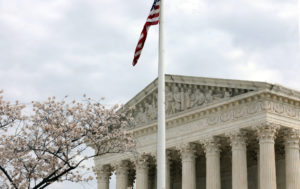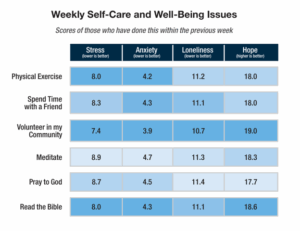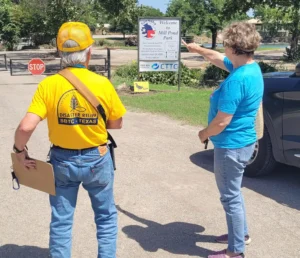
NASHVILLE, Tenn. (BP)–A proposal to be considered by messengers to the 1997 Baptist General Convention of Texas in Austin, Nov. 10-11, has been called a “tremendous vote of confidence in the work and ministry of the (state convention)” and “will most likely prove to be the document that gives birth to a new state convention … .”
The contrast in opinion about the Texas Baptist Effectiveness/Efficiency Committee’s report depends on who is giving the opinion. One thing for sure, conservative Texas Baptists and the leadership of the Southern Baptist Convention are unanimous in strong criticism of the report’s recommendations.
And one person on the 27-member committee who calls himself “apolitical,” says the recommendations completely missed the “efficiency” aspect of the charge given the committee.
The committee was appointed in 1995 by BGCT President Charles Wade, pastor of First Baptist Church, Arlington, and BGCT Executive Board Chairman Bob Campbell, pastor of Wesbury Baptist Church, Houston. The committee’s report, 8,605 words in 20 pages, recommends Texas send out “lay envoy” mission workers, produce its own church literature, magnify its multi-cultural ministries, step up its support for Texas families, provide theological education for laypeople and change the way churches qualify to send messengers to the state annual meetings.
Committee chairman Darold Morgan told the Baptist Standard, newsjournal of the state convention, the report represents “a tremendous vote of confidence in the work and ministry of the BGCT.”
Morgan, retired president of the SBC Annuity Board, said the Texas convention is “one of the healthiest denominational bodies in the nation.”
On the other hand, Ronnie Yarber, administrative director of Southern Baptists of Texas, a group of conservative leaders in the Lone Star state, told Baptist Press the report “will most likely prove to be the document that gives birth to a new state convention of Southern Baptists churches in Texas … (It) is a treatise on the opposition to the work of Southern Baptists in Texas. The tenor of the document is that of a defense of the Texas convention’s departure from the causes and purposes of the SBC.”
Morris H. Chapman, president and chief executive officer of the SBC Executive Committee, told Baptist Press the “report seems to signal a substantial departure from cooperative relationships of long duration … If this causes Southern Baptist churches in Texas to have to decide whether they are principally BGCT Baptists or Southern Baptists, it would be extremely unfortunate. Should that climate prevail, it would mean that more direct relationships would have to be forged between SBC entities and the Southern Baptist churches of Texas.”
Wade said the context of the study includes SBC developments that have disenfranchised many Texas Baptists.
“There’s no question Texas Baptists have seen what has happened in the SBC and said this won’t happen in Texas,” he told the Baptist Standard. “We’re going to protect Texas from a control mentality. We’re going to do our very best to maintain an openness to every Texas Baptist who wants to participate and help. We’re going to do our best to see that everybody has a part.”
Leroy Fenton, chair of the committee’s team that drafted the final report and pastor of First Baptist Church, Waxahachie, told the Baptist Standard the report is “much broader than the SBC controversy. The context of Texas Baptists is broad and comprehensive. We’re focusing on what we need to do in Texas. Hopefully, to do it more effectively.”
Rick Weintraub, a business professor at Dallas Baptist University and member of the Effectiveness/Efficiency Committee, said he voted for the report although he believes it completely missed the “efficiency” part of the study.
Weintraub, a member of Fielder Road Baptist Church in Arlington who described himself as “apolitical,” said “conservatives” were a minority on the committee in which, he said, it was obvious there were some “hand picked” members with an anti-SBC bias. However, Weintraub said overall the report’s thrust would enhance “the kingdom of God.”
His criticism of the study, Weintraub said, was its lack of a thorough study of “efficiencies” which could be gained at the state convention level. He said he was impressed with information given the committee by Jerry Rankin, president of the SBC International Mission Board, and Ernest Kelly, interim president of the SBC’s then-Home Mission Board, who explained the recent restructuring of the Southern Baptist Convention.
“Some of us fought hard and lost,” Weintraub said in the battle for more efficiencies in the state convention’s structure.
The EE committee was charged to “consider the best ways to assure the maximum efficiency and effectiveness of BGCT cooperative efforts in mission, evangelism, education, ethics, and human services.”
Weintraub said Morgan allowed all of the committee members to have a voice.
However, the first draft of the report was “bombastic,” Weintraub said and he told Morgan he would not vote for it as presented. The report was rewritten, “softening the language,” Weintraub said and he voted for it. Some of the language in the original version was “for effect,” Weintraub said. “There are some people who refuse to let it die,” he said, speaking of the controversy between those in leadership in Texas and Southern Baptist conservatives in the state.
In a statement received Sept. 2 by Baptist Press, Ken Hemphill, president of Southwestern Baptist Theological Seminary in Fort Worth, said he is still studying the report; “I will need time to digest and reflect on its multi-faceted proposals.”
He added, “I personally do not want to see Texas Baptists do anything that would even give the appearance that we are distancing ourselves from our larger Southern Baptist family. The EE report is a committee recommendation. I believe the good Southern Baptist people in Texas will do what is right to strengthen our ties with the SBC. Our strength as Southern Baptists is our cooperative strategy to reach the world and a key mechanism for implementing that strategy is our Cooperative Program.”













